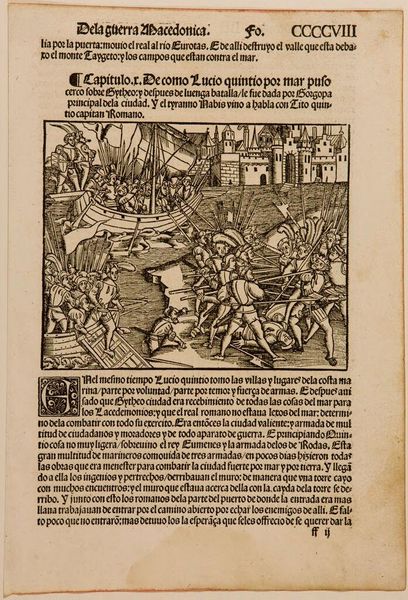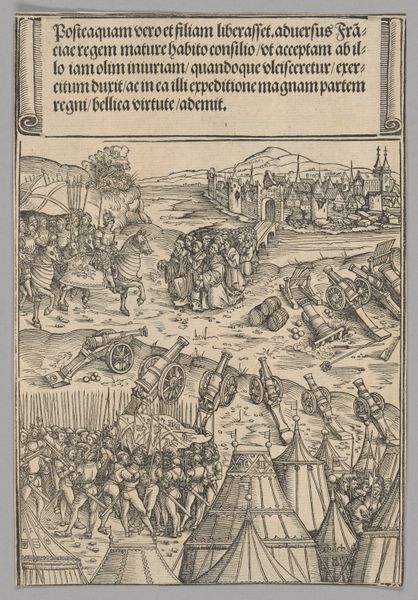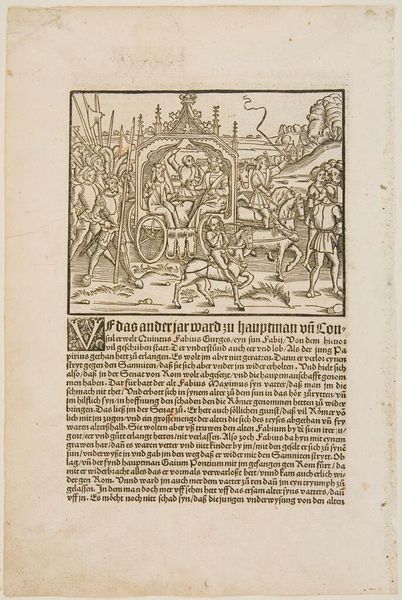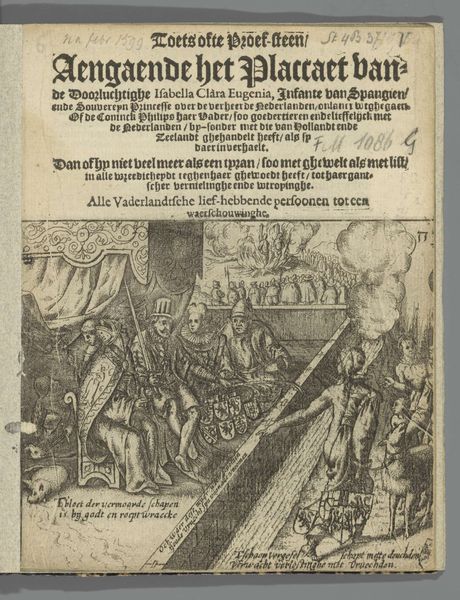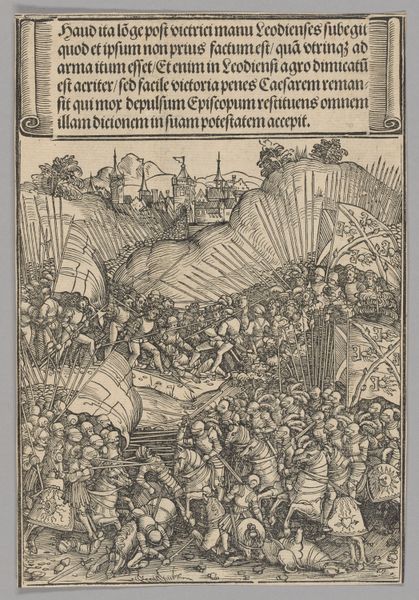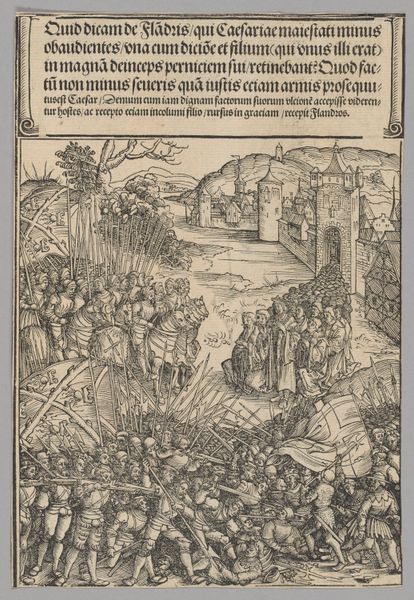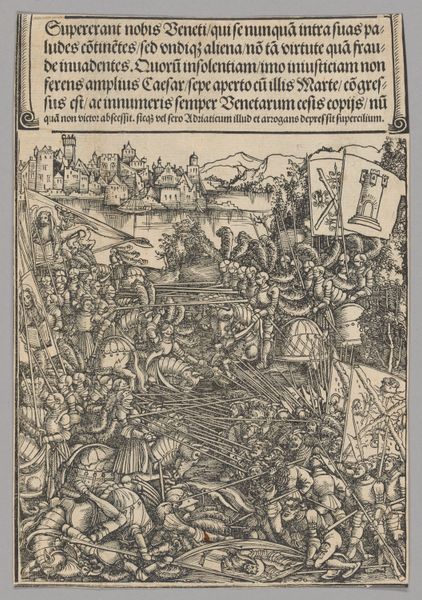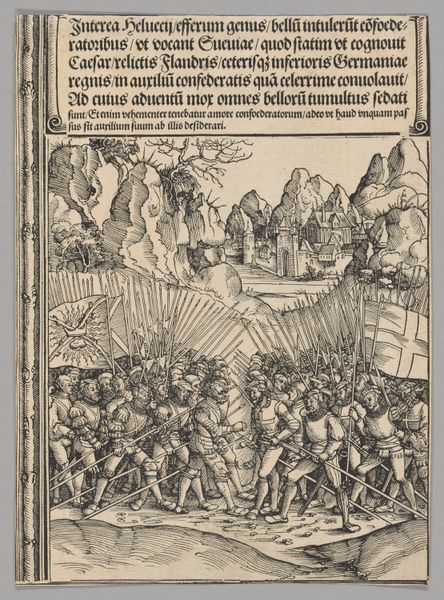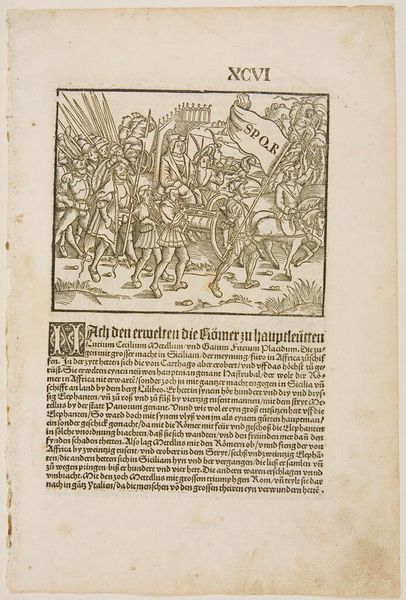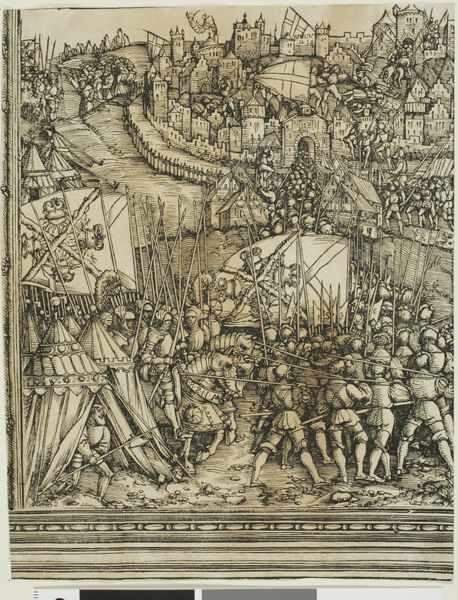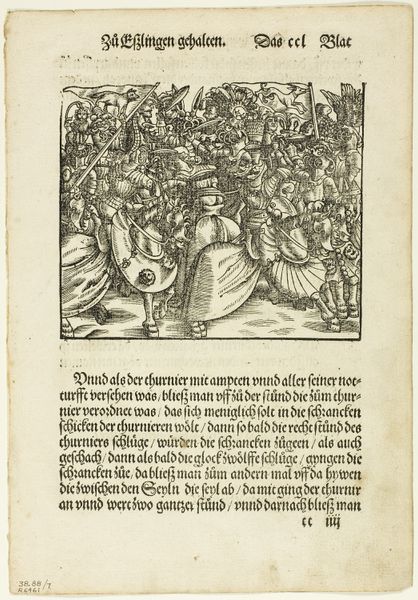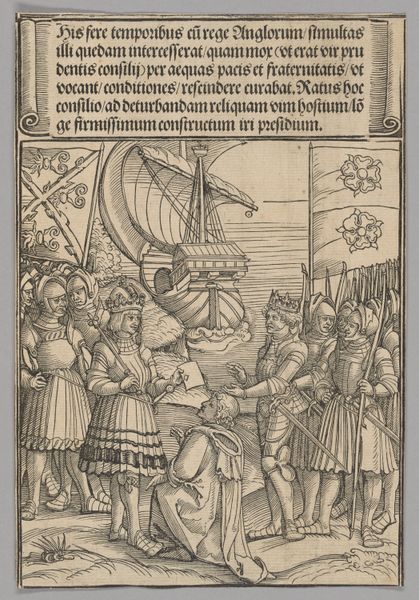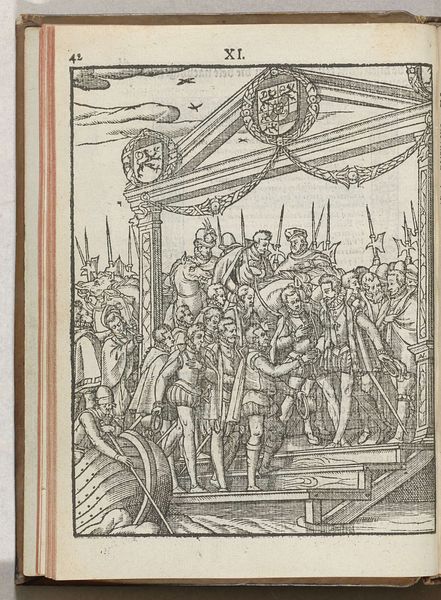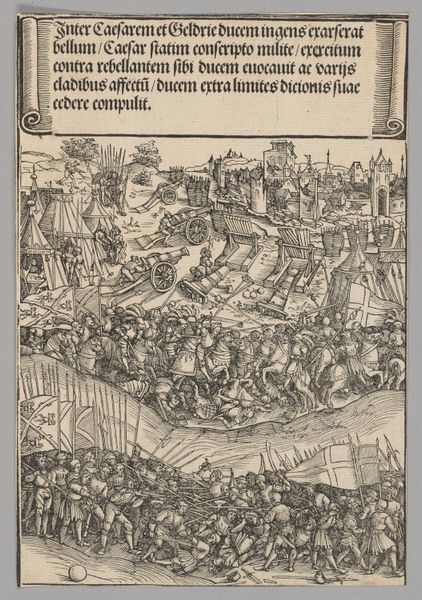
Illustration from Von dem Troianischen Krieg, plate 24 from Woodcuts from Books of the XVI Century c. 1536 - 1937
0:00
0:00
drawing, print, paper, woodcut
#
drawing
#
narrative-art
# print
#
paper
#
11_renaissance
#
geometric
#
woodcut
#
history-painting
#
northern-renaissance
Dimensions: 141 × 156 mm (image); 253 × 157 mm (image/te×t); 273 × 187 mm (sheet)
Copyright: Public Domain
Curator: Today we’re looking at an illustration, “Wie die Troianer mit den Griechen gestrit!,” or "How the Trojans Fought with the Greeks!" Plate 24 from *Woodcuts from Books of the XVI Century,* credited to Hans Weiditz, II, dating from around 1536-1937. It's currently held at the Art Institute of Chicago. It utilizes woodcut on paper. What strikes you immediately? Editor: Chaos. The whole thing feels incredibly dense. I see a roiling mass of bodies and ships, almost indecipherable in its details. The high contrast of the woodcut emphasizes the disarray, but there's also an incredible energy in that. Curator: It is very dynamic. Consider the context. Weiditz was creating illustrations during the Northern Renaissance, a period deeply engaged with classical themes, including the Trojan War narratives. However, rather than idealizing war, the image seems to capture its brutal reality. What we see may not be as heroic as expected. Editor: Precisely! There's a decided lack of idealized form. The figures are somewhat grotesque, their expressions intense, maybe pained, with bodies almost violently contorted in the throes of battle. And those ships, looming large, and oddly fragile as geometric forms against the violent swells and sky. Curator: The density you mentioned underscores this, suggesting the scale of conflict and its impact on those involved, regardless of rank or position. The battle wasn't about the powerful heroes. Everyone got affected in a time when a heroic narrative was more widely appreciated. Editor: Absolutely. Technically, the limited tonal range typical of woodcuts simplifies the forms, forcing the viewer to interpret the scene’s nuances from texture and composition, which are themselves conflicting and overwhelming. I like how this plays into creating an emotional narrative beyond the obvious clash of bodies. Curator: I concur, it is the emotionally raw presentation, juxtaposed with a heroic story, which really holds my interest, forcing a needed questioning about the politics of that moment, about class and representation, about trauma and aftermath. It really pushes its viewers to understand the meaning behind all those stories. Editor: A unique, visceral encounter with the familiar Trojan War story. I feel I could spend a very long time untangling the formal aspects of it!
Comments
No comments
Be the first to comment and join the conversation on the ultimate creative platform.
